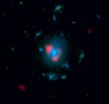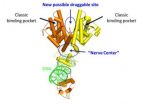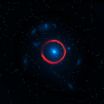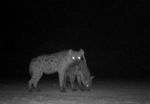(Press-News.org) The incidence of genital warts, or condylomata, declined by 93 per cent in girls given the HPV vaccine before the age of 14, according to a Swedish national registry study. The study was carried out by researchers at Karolinska Institutet in Sweden, and published in Journal of the National Cancer Institute.
Using a selection of population-based registries, the researchers at Karolinska Institutet studied 124,000 girls and women in Sweden between 10 and 44 years old who had received the HPV vaccine against condyloma and cervical cancer at some time between 2006 and 2010. The researchers examined their registry data over an average of 4.4 years in order to study the effect of the vaccine and who chose to receive it.
The research team has not yet studied the results of cervical cancer, which takes longer to develop. The effect on condyloma was, however, clear: subjects who were vaccinated before the age of 14 showed a 93 per cent decrease in condyloma. It is already known that the vaccine has to be taken before an infection with HPV (human papillomavirus) for it to work, and the researchers noted a level of protection below 50 per cent for those who vaccinated themselves after the age of 20.
The researchers also found that it was 15 times more common for daughters of academically educated parents to vaccinate themselves than for the daughters of less-educated parents. The educational level of the mother had most impact; it was eight times more common for a girl to be vaccinated if her mother was academically educated, as opposed to four times more common if her father was.
Opportunistic HPV vaccination was introduced in 2007 in Sweden offering girls between 13 and 17 (only) the possibility to vaccinate at a reduced price. Since 2012, the vaccine is part of the general vaccination programme and is thus offered free of charge to all girls between 10 and 12 along with a catch-up vaccination for girls and young women between 13 and 18.
"Our study supports the notion that the vaccine should be given at young age," says Dr Lisen Arnheim-Dahlström, Research Associate at the Department of Medical Epidemiology and Statistics at Karolinska Institutet. "When the vaccine was offered at a reduced price, the distribution was very unequal. Now that the vaccine is free and offered through the schools, it will be more evenly distributed in the population."
###
The study was made possible with funding from pharmaceutical company Merck, Sharp & Dohme, which sells the vaccine in question, and grants awarded to Dr Lisen Arnheim-Dahlström and Professor Joakim Dillner. Another member of the team, Dr Cecilia Young, is medical director of Sanofi Pasteur MSD, a drug company co-owned by Sanofi Pasteur and MSD exclusively devoted to the manufacture and sale of vaccines. The companies have not influenced the interpretation of the results.
Publication: 'Quadrivalent HPV-Vaccine Effectiveness: A Swedish National Cohort Study', Amy Leval, Eva Herweijer, Alexander Ploner, Sandra Eloranta, Julia Fridman Simard, Joakim Dillner, Cecilia Young, Eva Netterlid, Pär Sparén, Lisen Arnheim-Dahlström, Journal of the National Cancer Institute (JNCI) online 13 March 2013. Embargoed until March 13th 2013 at 4 PM US ET / 20:00 UK time / 21:00 CET
For further information, please contact:
Dr. Lisen Arnheim-Dahlström, Research Associate
Department of Medical Epidemiology and Biostatistics
Karolinska Institutet
Tel: 46-0-8-52482364 or 46-0-709-495-221
Email: lisen.arnheim.dahlstrom@ki.se
Contact the Press Office and download a photo: ki.se/pressroom
Karolinska Institutet – a medical university: ki.se/English END
Results from the Fluid Expansion as Supportive Therapy (FEAST) trial in East Africa show that children who are given fluid to treat shock have an increased risk of death due to cardiovascular collapse at 48 hours. These findings in BioMed Central's open access journal BMC Medicine challenge the generally held idea that early and rapid reversal of shock by fluid resuscitation translates into longer-term survival benefits.
The FEAST trial was conducted in six African hospitals across Kenya, Tanzania and Uganda without intensive care facilities. It included 3000 children ...
For the first time, researchers have mapped the genomes of tapeworms to reveal potential drug targets on which existing drugs could act. The genomes provide a new resource that offers faster ways to develop urgently needed and effective treatments for these debilitating diseases.
Tapeworms cause two of the World Health Organization's 17 neglected tropical diseases; echinococcosis and cysticercosis. The team sequenced the genomes of four species of tapeworm to explore the genetics and underlying biology of this unusual parasite. As an adult it can live relatively harmlessly ...
Results of a study published online in the Journal of Antimicrobial Chemotherapy today (Thursday), demonstrate that computer models can predict how HIV patients whose drug therapy is failing will respond to a new treatment. Crucially for patients in poorer countries, the models do not require the results of expensive drug resistance tests to make their predictions. The study also showed that the models were able to identify alternative drug combinations that were predicted to work in cases where the treatment used in the clinic had failed, suggesting that their use could ...
Autism results from abnormal cell communication. Testing a new theory, researchers at the University of California, San Diego School of Medicine have used a newly discovered function of an old drug to restore cell communications in a mouse model of autism, reversing symptoms of the devastating disorder.
The findings are published in the March 13, 2013 issue of the journal PLOS ONE.
"Our (cell danger) theory suggests that autism happens because cells get stuck in a defensive metabolic mode and fail to talk to each other normally, which can interfere with brain development ...
Some of the brightest galaxies in the universe – infant galaxies that churned out tens of thousands of stars each year at the dawn of the universe – evolved much sooner and in greater numbers than previously thought, according to new measurements obtained by University of Arizona astronomers.
The results are published in a set of papers to appear in the journal Nature on March 14 and in the Astrophysical Journal. The research is the most recent example of the discoveries coming from the new international ALMA observatory, which celebrates its inauguration today. ALMA, ...
ORLANDO, Fla., March 13, 2013 – Researchers at Sanford-Burnham Medical Research Institute (Sanford-Burnham) have determined the complete three-dimensional structure of a protein called HNF-4α. HNF-4α controls gene expression in the liver and pancreas, switching genes on or off as needed. People with mature onset diabetes of the young (MODY1), a rare form of the disease, have inherited mutations in the HNF-4α protein. This first-ever look at HNF-4α's full structure, published March 13 in Nature, uncovers new information about how it functions. The study ...
NEW YORK, MARCH 13, 2013 – Researchers have discovered a unique monoclonal antibody that can effectively reach inside a cancer cell, a key goal for these important anticancer agents, since most proteins that cause cancer or are associated with cancer are buried inside cancer cells. Scientists from Memorial Sloan-Kettering Cancer Center and Eureka Therapeutics have collaborated to create the new human monoclonal antibody, which targets a protein associated with many types of cancer and is of great interest to cancer researchers.
Unlike other human therapeutic monoclonal ...
When a batch of bright cosmic objects first appeared in maps in 2008 made with data from the South Pole Telescope, astronomers at the University of Chicago's Kavli Institute for Cosmological Physics regarded it only as an unavoidable nuisance.
The light sources interfered with efforts to measure more precisely the cosmic microwave background—the afterglow of the big bang. But the astronomers soon realized that they had made a rare find in South Pole Telescope's large survey of the sky. The spectra of some of the bright objects, which is the rainbow of light they emit, ...
In the southern Rift Valley of Kenya, the Maasai people, their livestock and a range of carnivores, including striped hyenas, spotted hyenas, lions and bat-eared foxes, are coexisting fairly happily according to a team of coupled human and natural systems researchers.
"I wouldn't call the results surprising," said Meredith Evans Wagner, a visiting scholar from the University of Florida in the Center for Systems Integration and Sustainability (CSIS) at Michigan State University and part of the research team. "Other research has shown that people and carnivores can coexist, ...
PASADENA, Calif.—Galaxies have been experiencing vigorous bursts of star formation from much earlier in cosmic history than previously thought, according to new observations by a Caltech-led team.
These so-called starburst galaxies produce stars at a prodigious rate—creating the equivalent of a thousand new suns per year. Now the astronomers have found starbursts that were churning out stars when the universe was just a billion years old. Previously, astronomers didn't know whether galaxies could form stars at such high rates so early in time.
The discovery enables ...




